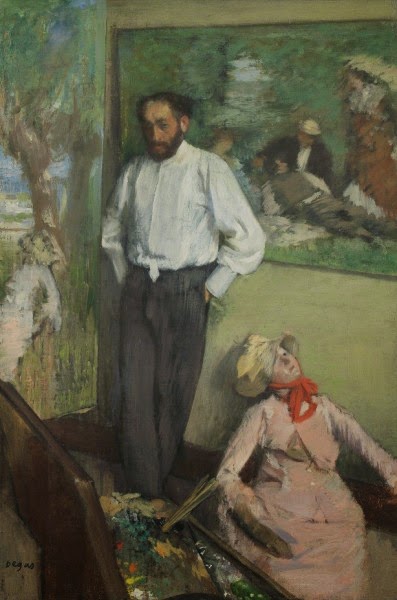A SILENT PARTNER IS NOT REALLY SO SILENT AS HE SEEMS........
The three of us, Pierrette, Borgy and I were off to see an exhibition called « The Silent Partners - Artist and Mannequin from Function to Fetish » at the Fitzwilliam Museum in Cambridge. I really didn’t know what to expect.
Obviously, from now on I will be looking at earlier portrait painting differently.
For centuries, the mannequin, was little more than a studio tool, a piece of equipment as necessary as an easel, pigments and brushes.
This exhibition was to show the multiple purposes the mannequin served – from fixing perspective, understanding the fall of light and shadow and painting reflections to acting as a support for drapery and costume. From the 19th century, the mannequin moved to centre stage and became the subject of the painting, and eventually, a work of art in its own right. The mannequin, in my book is somewhat ambiguous and here we were to see how much so. From the Renaissance to the present day all notions of realism and artifice in representational painting were defined and also helped us to understand the work, and working methods of many of the most significant artists in the history of European art, including Nicolas Poussin, Thomas Gainsborough, Pre-Raphaelite painters such as John Everett Millais and Gustave Courbet, Edgar Degas
 |
| Degas (1834-1917) Portrait of Henry Michel Lévy -c. 1978 |
 |
| .De-Chirico (1888-1978) -Hector-and-Andromache 1917 |
 | ||
| Photo by Alma Doll designed by Oscar Kokoschka-(1886-1980) |
The exhibition I saw some time ago in Marseille of Paul Delvaux’s work gave me a better understand of his models.
http://discovmaggsie.blogspot.fr/2014/08/four-months-later-back-to-marseille.html
What of course is fascinating, is that in the 19th century, young ladies could not be portrayed in the arms of a man. How thoroughly indecent could you get! So the artist worked from a mannequin and then painted the features of the person him/herself. The same for children…. I must make a study of some of the mentioned artists and see if it is possible to distinguish the real from the mannequin.
 |
| Jean Everett Millais (1829-1896) Sketch, Crusafer and his wife |
 |
| Jean Everett Millais (1829-1896) The Black Brunswicker 1860 |
Millais routinely painted from Mannequin, many of which he bought or hired. But his techincal brillance and mastey of the human figure as can be seen above , always disguised any hint of mannequin.
`
 |
| Alan-Beeton-Reposing- |
 |
| 18th-Century-Mannequin |
 |
| Herbert List- (1903-1975) Elektra- |
 |
| Francois- Pierre Guillois-mannequin- 1800 |
I might add that making them cost a fortune and sometimes the artist had to wait for a year before his order came in.
Pierre Imans, French as so many of the Mannequin makers were, gained a real reputation for his extremely life-like and refined wax figures, many of which were used in shop windows to display the garments of that period.
 | ||||||
| Wax Bust by Pierre Imans, 1910-20 |


Commentaires